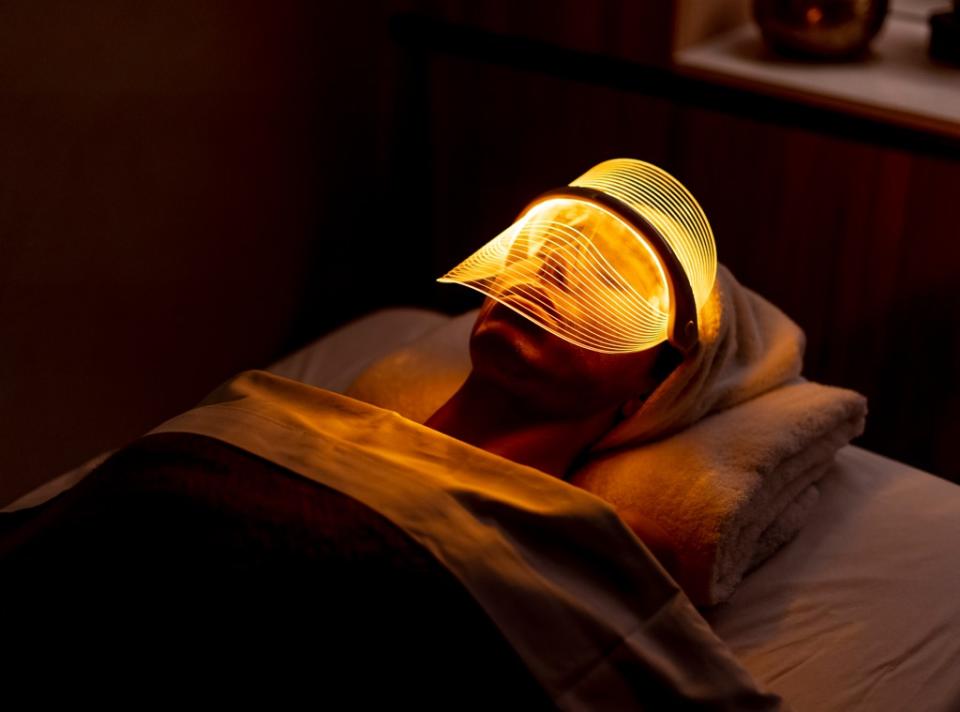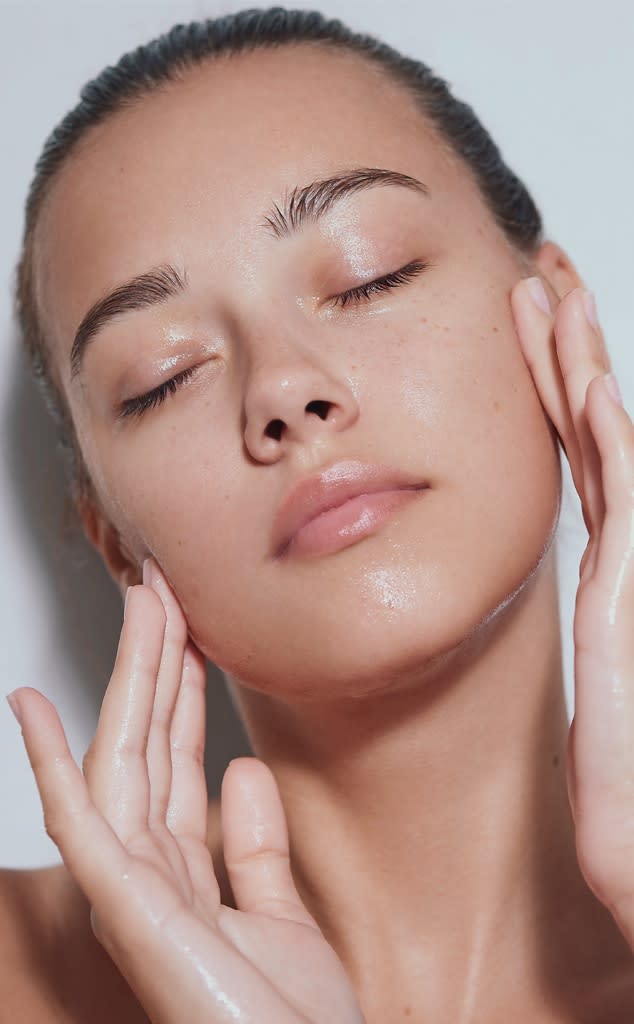All Of Your Questions About At-Home LED Light Therapy Tools, Answered
Originally appeared on E! Online
Get ready to light up your skincare routine.
Whether you're trying to minimize wrinkles or reduce the appearance of acne and hyperpigmentation, LED light therapy devices have become the shiny new gadgets to use at home.
And before you think it sounds a little too good to be true, you'll be delighted to know it can be a game-changing step your routine.
"LED (light emitting diodes) and infrared light is such an amazing, noninvasive way to up your skincare game," New York-based licensed master esthetician Rachel Lozina told E! News. "You don't have to worry about replenishing it or whether the product is working, especially if you use at home, because it enhances your skincare results—it's a win-win."
But not all LED light therapy masks and wands are created equally. For starters, there are several types to choose from—red light, blue light, yellow light, etc.—and they each target specific skin conditions. Plus, as the beauty expert noted, you'll want to pay attention to the light intensity and wavelength the devices emit.
Retinol Products That Will Transform Your Skin—Ranked
More from E! Online
Which is why we asked Rachel to deliver her best tips on how LED light therapy works, what products to look for and when to implement it into your regimen.

How does LED light therapy work and what does it treat?
"Red light therapy works by creating excitement in the cell, which equates to energy," Rachel explained. "Your skin absorbs the light and transforms it into energy. That energy then makes the mitochondria (the powerhouse of the cell) do their job better, which in turn stimulates collagen, elastin and fibroblasts."
Think of LED light therapy as a hype-squad for your cells.
"I always say LED light is like a good song—everybody gets up and starts dancing," the oncology esthetician shared. "And that's what your cells do, they get to work and stop being lazy."
What are the benefits of doing LED light therapy?
"The benefits include brighter, smoother and healthier-looking skin," Rachel said. "Because it increases micro-circulation in the skin, you get an immediate glow. LED treats a myriad of skin conditions: Fine lines, wrinkles, rosacea, scars, keloids, eczema, dry skin, acne, pigmentation, oily skin and hair growth."
However, there's a slight catch to doing the treatment. "The downside is the time it takes to do it," the Blue Water Spa founder noted, "and the consistency at which you have to do it."
It's also important to note that at-home LED devices won't give you the same effect as doing an in-office procedure. But they can prolong the results between appointments and improve your skin overall.
What skin conditions can’t LED light therapy treat?
Although LED light therapy can help address various skin concerns, there are a few conditions it isn't meant for.
"LED does not treat vitiligo, inflamed acne or blackheads," Rachel pointed out. "With vitiligo, it's an autoimmune disease, and LED light therapy has no effect on it."
Blackheads and inflamed acne can't be treated effectively either. "They are considered impactions of dirt, dead skin and oil in the hair follicle," she continued. "Only exfoliation and extractions can remove them."
Another tip to keep in mind? LED doesn't mix well with certain procedures. "If you just had a peel," the laser technician added, "I would avoid using LED. But after the first day, you can resume your daily LED treatments."

What are the different types of LED light therapy?
Although red light therapy is the most popular form of the treatment, as it helps treat fine lines and wrinkles, by penetrating to the dermis "to stimulate collagen and elastin," said Rachel, there are other types of light therapy.
"Blue light therapy is best for acne because it penetrates about 1 millimeter into the skin, which is ideal for targeting and reducing the activity of the sebaceous glands," Rachel explained. "Yellow is best for pigmentation."
In fact, the yellow light penetrates your skin's deepest layer and increases the production of red blood cells, which is why it helps with skin problems like dark spots, inflammation and swelling.
What are the best at-home LED light therapy devices to use?
While there are plenty of fan-favorite LED light therapy tools on the market—like the beloved Solawave Red Light Therapy, PMD Clean Acne Wand and Omnilux Contour Face Mask—there are a few caveats to using an at-home device.
"Quality and lumens matter," Rachel reminded. "The more diodes (actual lights) you have, the better, and the quality ensures proper depth. Basically, the bigger and brighter, the better."
That means you'll want to check the light intensity, which should be within a range of 40-100 mW/cm^2 (it's measured by milliwatts per square centimeter). Plus, the wavelength, which should hover around 630 nanometers for red light and 830 nanometers for near-infrared light.
Rachel's overall pick? The LYMA Laser.
"The wand ensures that a six-minute treatment for each side of your face is equivalent to two hours under an LED," she said. "I do like masks as well. The Omnilux is a great choice for an at-home LED light mask."
And if you're wondering which step in your skincare routine to use the device, Rachel added, "I love using it at the end after all of the hydrators and serums are applied."
Now that you have your bases covered on LED light therapy, click here for more skincare tips and tricks.
We value your thoughts! Click here to share your feedback and help us improve!

